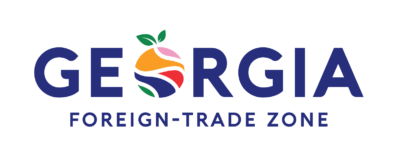Foreign-Trade Zones: Fostering US Competitiveness in a Global Economy
By Sean Lydon, Director Sony Electronics Inc.
The Foreign-Trade Zone program helps U.S. manufacturers and distributors on various levels. Participants are able to defer duty payments until goods are ready to be consumed in the United States. Manufacturing firms in the program are able to choose the duty rate they pay at the time of removal, the duty rate on the parts or the duty rate on the finished goods. This places them on the same footing with respect to U.S. Customs duty as their foreign competitors. However, it should be noted that goods entered into the U.S. Customs Territory from foreign-trade zones are not yet eligible for preferential duty rate treatment under free-trade agreements. As a consequence, imports from free-trade agreement countries continue to maintain a duty cost advantage over dutiable goods entered from foreign- trade zones.
Use of the program also fosters a closer relationship between importers and Customs. Detailed foreign-trade Zone operators manuals and close communication give Customs officials a relatively strong level of confidence in the operators and their internal controls and procedures. Even for those companies that use Customs brokers, such confidence building will be increasingly more important in the era of enhanced border security. Injecting the program into your supply chain can be a stepping stone toward making your firm a tough global competitor.
Recent cases of lead paint in children’s toys, petroleum derivatives in pet foods and antifreeze in toothpaste expose weaknesses in a supply chain where goods are manufactured far from their customer base. Foreign-trade zone operations have the advantage of closeness of production and distribution to the marketplace. They represent a middle ground, which combines local advantages with low-cost foreign inputs. Thus, the manufacturing process does not have to be exiled to foreign countries.
Employees at the Sony Electronics plant near Pittsburgh, Pa., use a production line that integrates the flexibility of manual labor with the cost reduction and quality improvement available through automation. The plant’s supply chain is also a hybrid; it uses its FTZ status to combine imported and domestic resources at a duty rate otherwise only available to manufacturing plants in other countries. The East Coast location means the plant can ground ship completed goods to 60 percent of their customers within 24 hours. Feedback from the local market can be more easily understood and more quickly assimilated back into the product by the local engineering staff. Quality problems with outsourced components are found at the plant, not in customers’ homes. These advantages are not easily replicated in a distant location.
The appeal of the FTZ program also extends to the distribution operations of importers. The introduction of electronic filing by Customs allows goods to move to your door without intervening steps by you, Customs, or your broker. In addition to deferring duty on merchandise until it is ready to be sold, duty can be eliminated on merchandise that is obsolete and bound for destruction. Merchandise is exported without ever paying duty, eliminating the lengthy drawback process. FTZ status also makes it possible to distribute products that are not eligible for U.S. import, instead of relying on distribution from overseas.
This could mean improved service levels if your customer is located in a country closer to the U.S. than the merchandise country of origin. For these reasons, Sony currently operates five FTZs in the U.S. and Puerto Rico as part of its strategy to reduce supply chain costs while increasing throughput, customer service levels and security.
U.S. organizations can use the FTZ program not only to survive, but to succeed in today’s fiercely competitive global economy. An effective implementation of the program can not only reduce transportation time and import costs but lead time variability as well.

